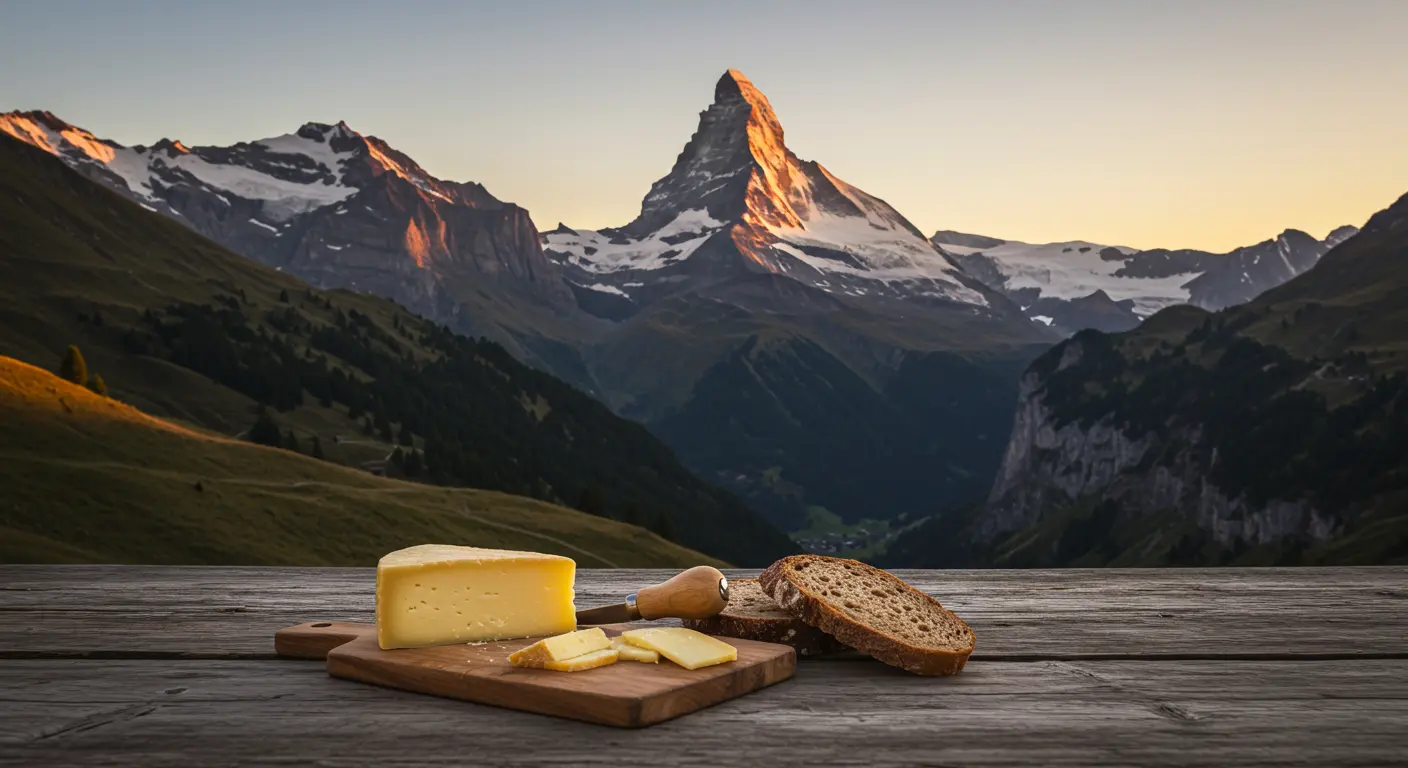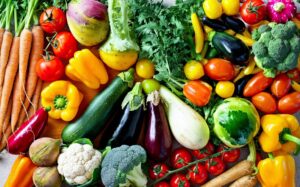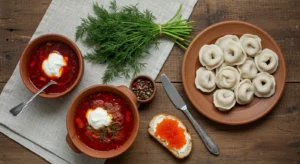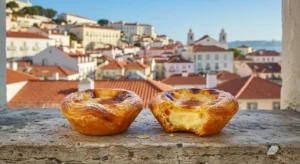Table of Contents
Swiss Food: Your Delicious Guide to More Than Just Fondue
Let’s be honest. When you think of Swiss food, what instantly comes to mind?
If you pictured a bubbling pot of cheese fondue or a bar of milky chocolate, you’re not wrong. Those are the rockstars, the global ambassadors of Swiss cuisine. But what if I told you that Switzerland’s culinary soul runs so much deeper?
Nestled in the heart of Europe, with influences from Germany, France, and Italy, Switzerland’s food is a direct reflection of its landscape. It’s the food of hardy farmers, alpine herders, and bustling city-dwellers. It’s hearty, comforting, and designed to fuel you through a day in the mountains—or simply a cozy evening at home.
Consider this your friendly, no-fuss guide. We’re moving beyond the clichés to explore the authentic, stick-to-your-ribs dishes that real Swiss people love. Get ready to discover a world of flavor that will have you dreaming of a culinary trip to the Alps.
The Holy Trinity: Swiss Cuisine’s Foundational Flavors
Before we dive into specific dishes, you have to understand the three pillars that hold up Swiss cooking. You’ll see these ingredients again and again, and for good reason—they’re locally sourced, incredibly versatile, and downright delicious.
- Potatoes: The humble potato is a Swiss superstar. Whether boiled, fried, roasted, or röstied (more on that in a second!), It’s the ultimate comfort base for countless meals.
- Cheese: This is the big one. Forget the pre-shredded stuff. We’re talking about over 450 varieties of artisanal cheese, from nutty Gruyère to pungent Appenzeller and the iconic holey Emmentaler. Cheese isn’t just an ingredient; it’s a cultural event.
- Bread: From crusty Züpfe (a braided bread) to dense Ruchbrot, bread is on every table. It’s the perfect vehicle for cheese, the essential dipper for fondue, and a meal in itself.
Must-Try Swiss Dishes (That Aren’t Just Fondue)
Okay, okay, we have to start with the classics. But we’ll give you the real scoop on how to enjoy them like a local.
Raclette: The Social Meltdown
If fondue is the sophisticated dinner party, raclette is the fun, communal grill-out. The name comes from the French verb racler, meaning “to scrape,” and that’s exactly what you do.
Here’s the scene: A half-wheel of raclette cheese is heated by a special grill right at your table. As the top layer melts gloriously, you scrape it directly onto your plate, over boiled new potatoes, cornichons (those tiny, tangy pickles), and pickled onions.
The experience is half the fun. It’s interactive, messy in the best way, and unbelievably satisfying. The cheese develops a slightly crispy skin as it melts, adding a wonderful textural contrast. Trust me, one bite and you’ll understand why this is a winter tradition in Swiss households.
Rösti: The National Breakfast of Champions
Think of Rösti as Switzerland’s answer to the hash brown, but upgraded to an art form. It’s a simple, large pancake made from grated potatoes, pan-fried in butter or oil until the outside is golden brown and incredibly crispy, while the inside stays soft and tender.
Originally a farmer’s breakfast from the German-speaking region of Switzerland, Rösti is now a beloved side dish served with everything. You’ll find it plain, or verfeinert (refined) with additions like bacon, onions, or—you guessed it—melted cheese. It’s the ultimate comfort food, a testament to how the Swiss can turn a simple potato into something magical.
Älplermagronen: The Ultimate Alpine Comfort Food
This dish has a name that’s a bit of a tongue-twister for beginners (try: Alp-ler-mah-gro-nen), but it’s a story in a bowl. Translating to “Alpine herder’s macaroni,” this is the dish that fueled the men and women watching over cattle in the high pastures.
It’s a hearty, no-nonsense casserole that combines macaroni, potatoes, cheese, cream, and onions. It’s often served with a side of apple sauce, which might sound strange, but the sweet and tangy apple cuts through the rich, cheesy pasta, making it a game-changing combination. This isn’t fancy food; it’s honest, filling, and deeply comforting.
A Tale of Three Regions: How Geography Shapes the Plate
One of the most fascinating things about Swiss food is how it changes as you travel across the country’s cantons. The German, French, and Italian influences are palpable.
- German-speaking Switzerland: This is where you’ll find the heartiest, meat-and-potatoes fare. Think Rösti, Zürcher Geschnetzeltes (sliced veal in a creamy mushroom and white wine sauce), and all the legendary cheese dishes.
- French-speaking Switzerland (Romandy): The cuisine here feels more French—a little lighter, with more sauces and elegance. This is the home of Fondue Moitié-Moitié (half Gruyère, half Vacherin cheese) and delicate lake fish dishes. A personal favorite is the Papet Vaudois, a comforting stew of leeks and potatoes served with sausage.
- Italian-speaking Switzerland (Ticino): Cross into the canton of Ticino, and the vibe is instantly Mediterranean. Here, it’s all about risotto, polenta, and osso buco. The grottos (traditional stone-lined restaurants) serve up robust, sun-drenched flavors that feel a world away from the alpine north.
Beyond the Savory: A Sweet Finish
We can’t talk about Swiss food without paying homage to its world-famous sweets.
- Swiss Chocolate: This is no mere candy bar. Swiss chocolate is a point of national pride, thanks to pioneers like Daniel Peter, who invented milk chocolate in 1875. The quality of the milk and the precision of the conching process create that impossibly smooth, creamy melt. A visit to a Confiserie (confectionery) is a must.
- Birchermüesli: Did you know the health food trend of muesli started in Switzerland? Dr. Maximilian Bircher-Benner created it for his patients. The original Birchermüesli is a fresh mix of rolled oats soaked in milk or cream, grated apple, nuts, and lemon juice. It’s a far cry from the dried-out stuff in boxes and is a genuinely refreshing and healthy way to start the day.
Your Swiss Food Adventure Awaits
The true beauty of Swiss cuisine lies in its authenticity. It’s not about molecular gastronomy or fussy presentations. It’s about quality ingredients, time-honored techniques, and the simple joy of sharing a good meal with good company.
So, the next time you have a chance to try Swiss food, be bold. Go beyond the fondue. Order the Rösti, seek out the Älplermagronen, and always, always save room for a little more chocolate. Your taste buds will thank you for the journey.
Frequently Asked Questions (FAQs)
Q: I’m a vegetarian. Will I find good options with Swiss food?
A: Absolutely! While many classic dishes are meat-heavy, Switzerland is a paradise for vegetarians thanks to its incredible cheese culture. Fondue, Raclette, and countless cheese-based pastas are naturally vegetarian. Just be sure to ask, as sometimes meat broths can be used in unexpected places.
Q: What’s the number one etiquette rule for eating cheese fondue?
A: Don’t lose your bread in the pot! It’s considered a minor culinary sin. Spear your bread cube firmly, give it a good swirl, and keep a grip on it. Local lore also says that if a man loses his bread, he buys the next round of drinks; if a woman does, she must kiss her neighbors. It’s all in good fun!
Q: Is Swiss food generally expensive?
A: Switzerland itself has a high cost of living, and this extends to restaurants. However, the quality of ingredients is exceptionally high. You can save money by visiting local markets and grocery stores like Coop or Migros to put together a delicious picnic of fresh bread, local cheese, and cured meats.
Q: What is a typical Swiss drink to pair with the food?
A: For cheese dishes, the classic pairing is a crisp, dry white wine from Switzerland, like a Fendant or Chasselas. For a non-alcoholic option, Rivella—a unique Swiss soft drink made from milk whey—is a national favorite that surprisingly complements the salty, cheesy flavors very well.
Q: Where can I find authentic Swiss recipes to try at home?
A: For reliable and authentic recipes, a great resource is the official Switzerland Tourism website. They often feature traditional dishes with clear instructions to help you bring a taste of the Alps into your own kitchen.




